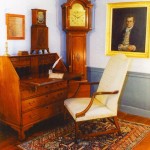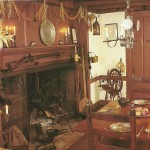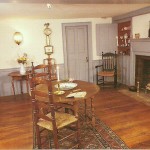
Friday, October 8, JoAnne and I visited Willard Clock Museum (http://www.willardhouse.org/) near North Grafton, Massachusetts. The museum is in the original family homestead, a pioneer-era, hand-hewn beam framed complex of buildings. The buildings themselves helped one to step back in time and get the feel for the era. What a tremendous display of fine early American craftsmanship, industry and inventiveness awaited inside the decidedly unpretentious exterior. I recommend it. What a great stop for investigating the early milieu of greater Boston.

Four Willard brothers and their immediate descendants were the clockmakers. Benjamin the eldest built tall clocks exclusively, some still working today, second hands included. He used brass etched faces that he hired an engraver to do for him. I admired the woodwork; but the brothers did not do that themselves, usually. Brother Simon invented banjo clocks. A copy of the patent is on display showing signatures by then President Thomas Jefferson and secretary of state, James Madison. Simon made one displayed clock with a silver face, which was formed for him by Paul Revere. The third brother, Ephriam also has clocks on display. The last brother, Aaron was the businessman of the family and had a factory in Roxbury. The business continued three generations until a grandson of one brother moved to California and made a fortune in the gold rush.

In the workshop we saw the hand machines used to cut gears. The newer one was turned by a foot pedal. All the gears were filed to a point by hand. We could see why one clock might take six months or more to make. Also displayed in the workshop was an example of the workings of a large tower clock such as the brothers would have made for church clock towers or government buildings.
JoAnne and I commented that so few things are even attempted in our day that take a long time to make. We do not have the time or patience for it. It is one of the weaknesses of our present cultural mindset . But I also could not help but reflect upon the legacy of their craftmanship. Because of their skill, care and patience, people are still admiring their work and preserving it, centuries later. I think sometimes the best done work is not rewarded quickly; but is increasingly admired over the long term.
One reply on “Willard Clock Museum”
Thanks to the helpful and knowledgeable staff at the Clock Museum, I have been able to add a couple more photos to this post. If you are in Boston and enjoy early American histoyr, I recommend this museum.